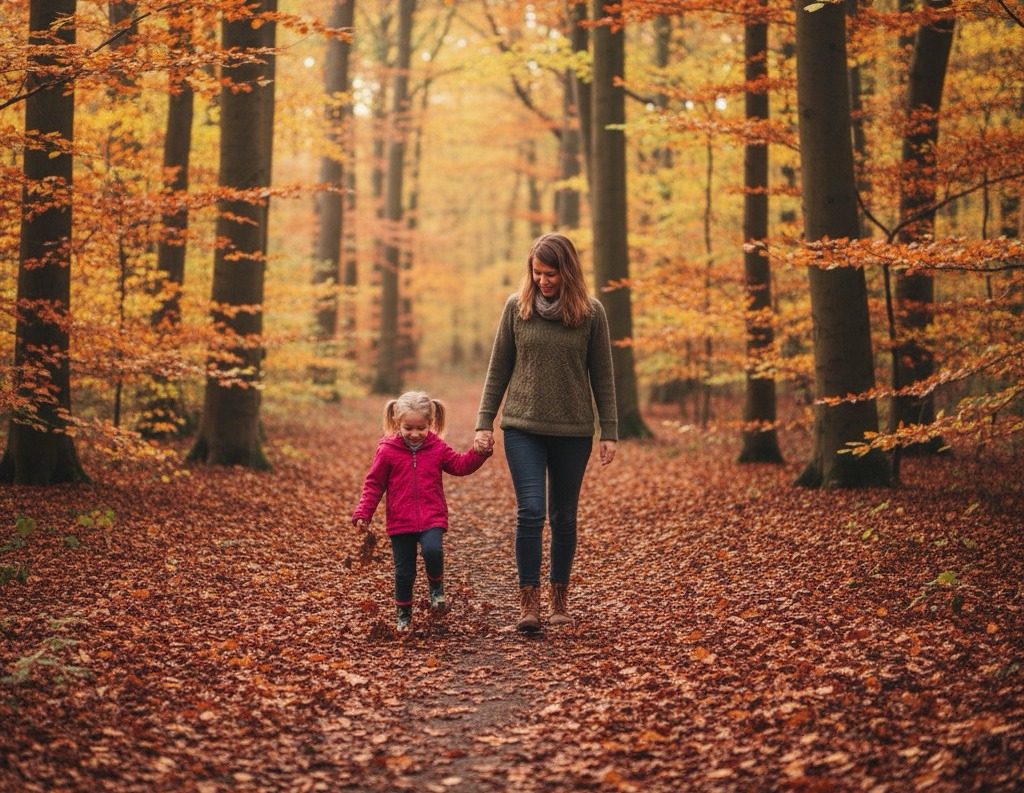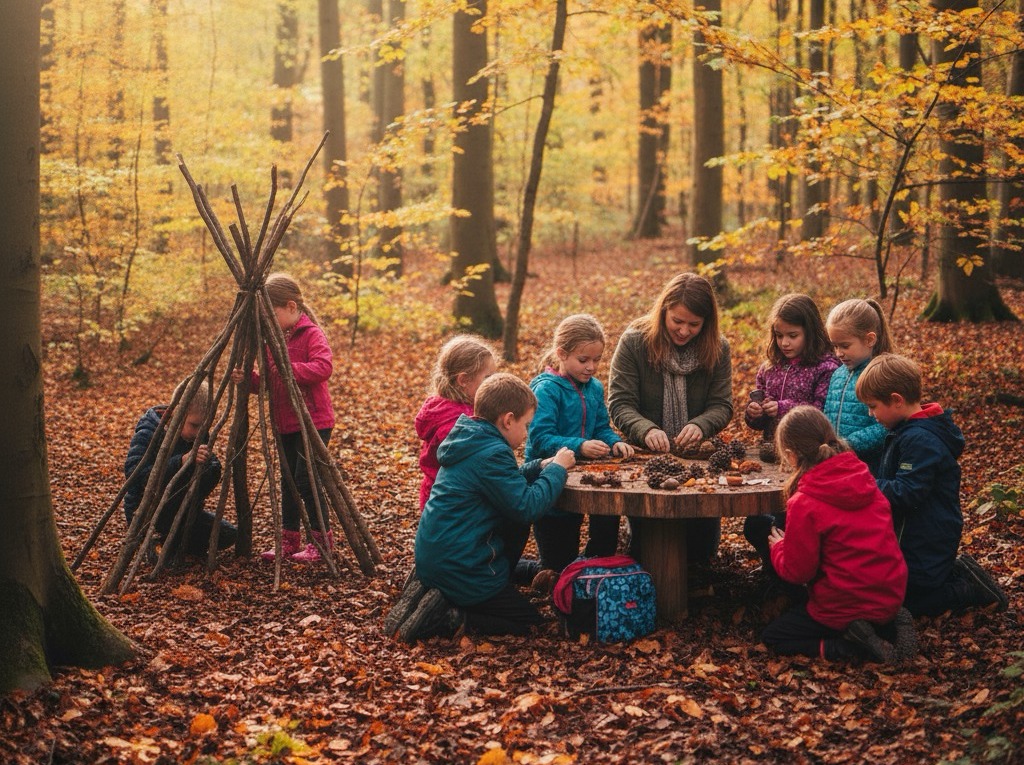· Guides & Resources · 5 min read
Debunking the Myths: A Practical Guide to Forest School
Everything parents need to know about Forest School and outdoor learning: what it is, its core principles, the profound benefits for children's development, and why it's more than just playing outside.

Parents and educators new to Forest School often have valid questions about safety, cost, the British weather, and academic progress. While these concerns are understandable, many perceived ‘disadvantages’ are actually misunderstandings of the ethos. They are the very features that make Forest School a powerful tool for child development.
This guide addresses those concerns directly, debunking the myths and reframing them as the core strengths that help build resilient and capable children.
Concern: It’s Too Dangerous
Strength: It Builds Real-World Safety Skills
The idea of children using tools or being near a campfire can be worrying. However, Forest School is not about exposing children to uncontrolled danger; it’s about teaching them to understand and manage risk in a carefully supervised environment.
- Fostering Risk-Benefit Analysis: Supervised activities, like using a vegetable peeler to whittle a stick, teach children to respect tools and think about consequences. This builds genuine competence and confidence, which is far more effective for long-term safety than an overly protective approach that leaves a child with no experience of managing real-world risks.
- The Importance of Qualified Leaders: A Forest School is only as safe as its leader. Accredited practitioners hold a Level 3 qualification, which involves rigorous training in safety, child development, and risk assessment. Sessions operate with high adult-to-child ratios, ensuring all activities are closely and professionally supervised.
Concern: It’s Too Expensive
Strength: An Investment in Lifelong Skills
The cost of sessions and specialist gear can seem like a significant barrier. It is more helpful to see this as an investment in your child’s long-term well-being and the development of crucial life skills.
- Developing Invaluable Attributes: The fees contribute to qualified staffing, site maintenance, and insurance. In return, your child develops resilience, problem-solving abilities, and self-confidence—invaluable skills that support all other areas of their life and learning.
- Practical Ways to Manage Costs: Many schools use Pupil Premium or other funding to subsidise places. For outdoor gear, you don’t always need expensive brands; functional waterproofs and wellies are key. Look for items in sales, on second-hand marketplaces, or through local ‘pass it on’ schemes.
Concern: The Unpredictable Weather
Strength: It Forges Resilience and Adaptability
The UK’s climate is famously unpredictable, leading to worries that children will be miserable. The Forest School philosophy directly tackles this with its motto: “There’s no such thing as bad weather, only unsuitable clothing.”
- Building Physical and Mental Fortitude: Experiencing the elements in appropriate gear teaches children to adapt and persevere. They learn that they are capable of being comfortable and having fun in challenging conditions. This builds a robustness and positive mindset that is difficult to teach indoors.
- Safety Remains Paramount: This ethos does not extend to dangerous conditions. A professional Forest School leader will always cancel or adapt a session in the event of high winds, thunderstorms, or extreme cold that poses a genuine risk.
Concern: It Distracts from Academic Learning
Strength: It Provides a Foundation for Academic Success
A frequent criticism is that time in the woods takes away from the National Curriculum. In reality, Forest School provides the practical foundation upon which academic skills are built and powerfully supports the ‘Characteristics of Effective Learning’.
- Holistic Learning in Practice: Foundational UK research, such as that compiled by the Forest Research agency, has consistently shown that Forest School significantly boosts the personal and social skills that are critical for academic success. Children who are confident, curious, and work well with others are better prepared to learn in the classroom.
- Direct and Meaningful Curriculum Links: With a creative approach, Forest School activities link directly to the curriculum in a hands-on way that makes learning stick.
| Subject | Forest School Application |
|---|---|
| Mathematics | Counting, sorting, and categorising natural objects; measuring distances; understanding shapes and patterns. |
| Science | Identifying plants and animals; observing seasonal changes; learning about habitats and basic physics through shelter building. |
| English | Developing descriptive vocabulary; storytelling around a campfire; following multi-step instructions. |
| PSHE | Enhancing teamwork and collaboration; developing empathy; building self-esteem by mastering new skills. |
Conclusion: See the Strengths for Yourself
The common concerns about Forest School—safety, cost, weather, and learning—are understandable. However, when examined closely, they are revealed as the core strengths of the approach. Forest School is intentionally designed to teach risk management, build resilience, and provide a practical, sensory foundation for lifelong learning. The best way to understand its value is to see it in action. We encourage you to speak with a local provider, ask to observe a session, and see for yourself how these challenges are transformed into strengths that help children thrive.
Frequently Asked Questions
Is Forest School suitable for children with special educational needs (SEN)?
For many children with SEN, it is highly beneficial. The child-led, flexible approach allows a skilled leader to adapt activities to individual requirements. The sensory-rich environment can be both calming and stimulating, helping children who may struggle in a traditional classroom. Always discuss your child’s specific needs with the provider.
How does Forest School benefit a child’s mental health?
Regular time in nature is proven to reduce stress and anxiety. The non-judgmental, success-oriented environment of Forest School, where children are empowered to make choices and solve problems, is a powerful way to build self-esteem and emotional intelligence.
What is the most important piece of clothing for my child at Forest School?
Good quality, comfortable waterproof footwear (like wellies with warm, thick socks) is essential. Cold, wet feet can make any experience unpleasant. After footwear, effective waterproof trousers and a jacket are the next priority to keep your child warm, dry, and focused on the learning and fun.


